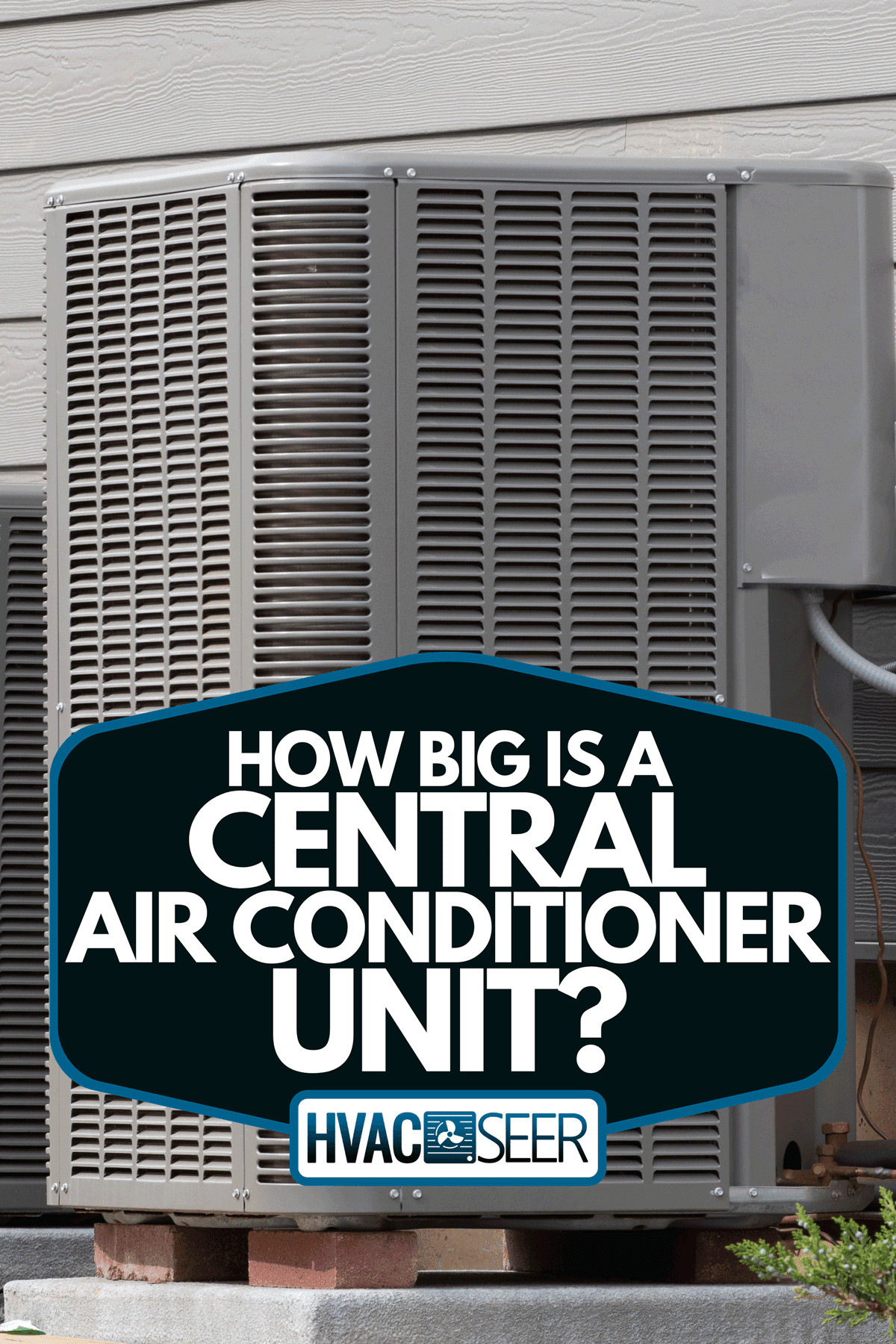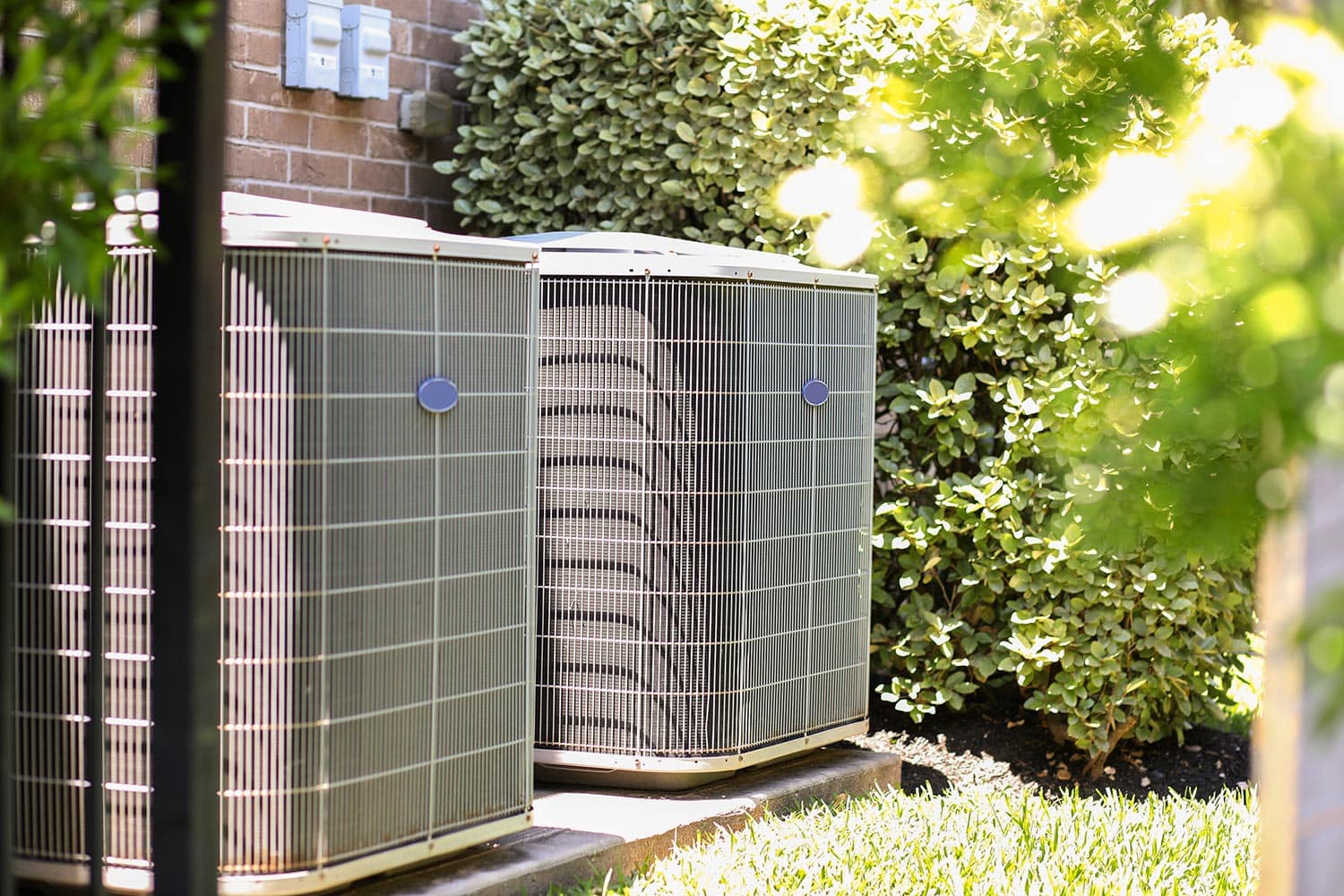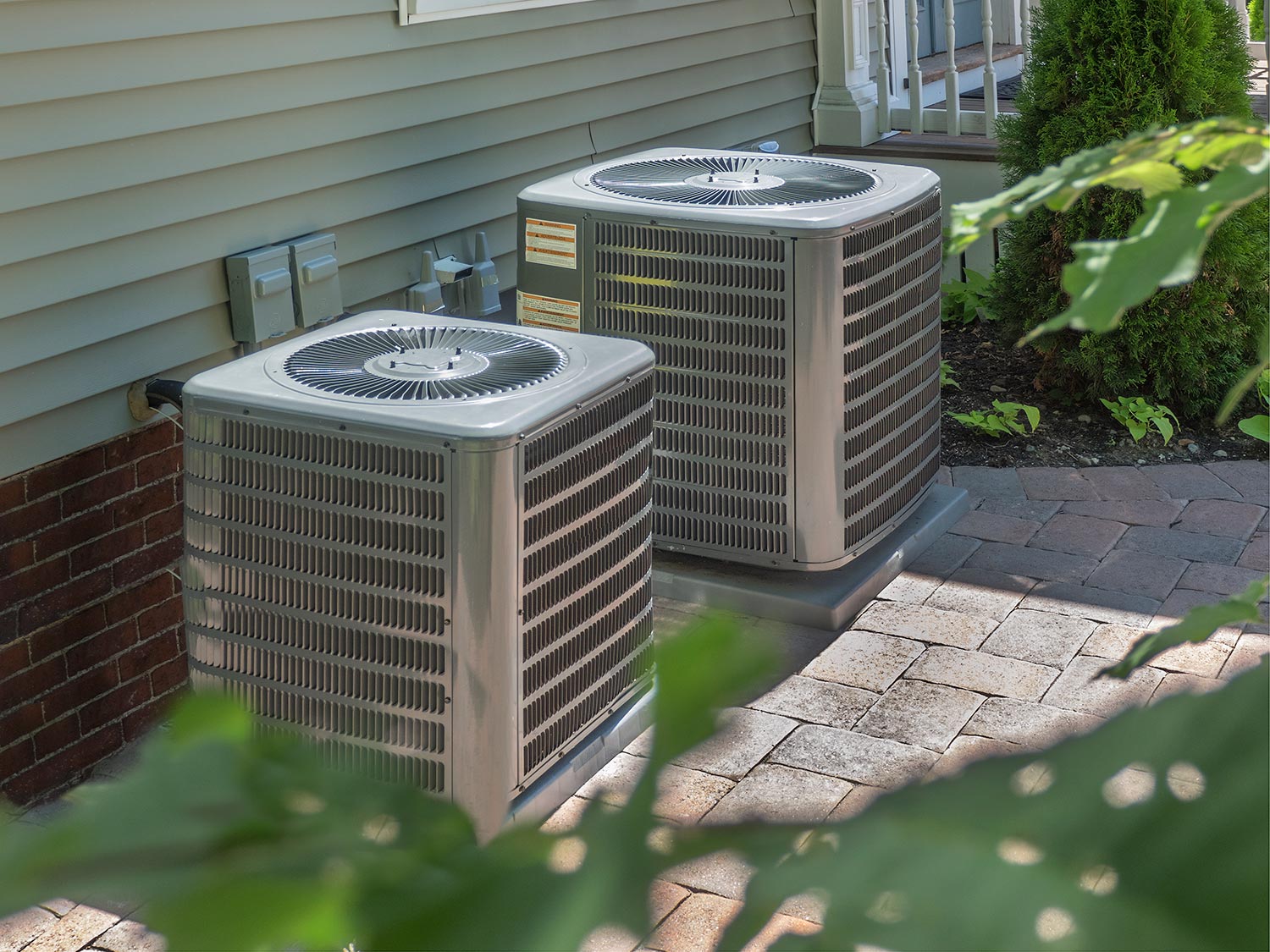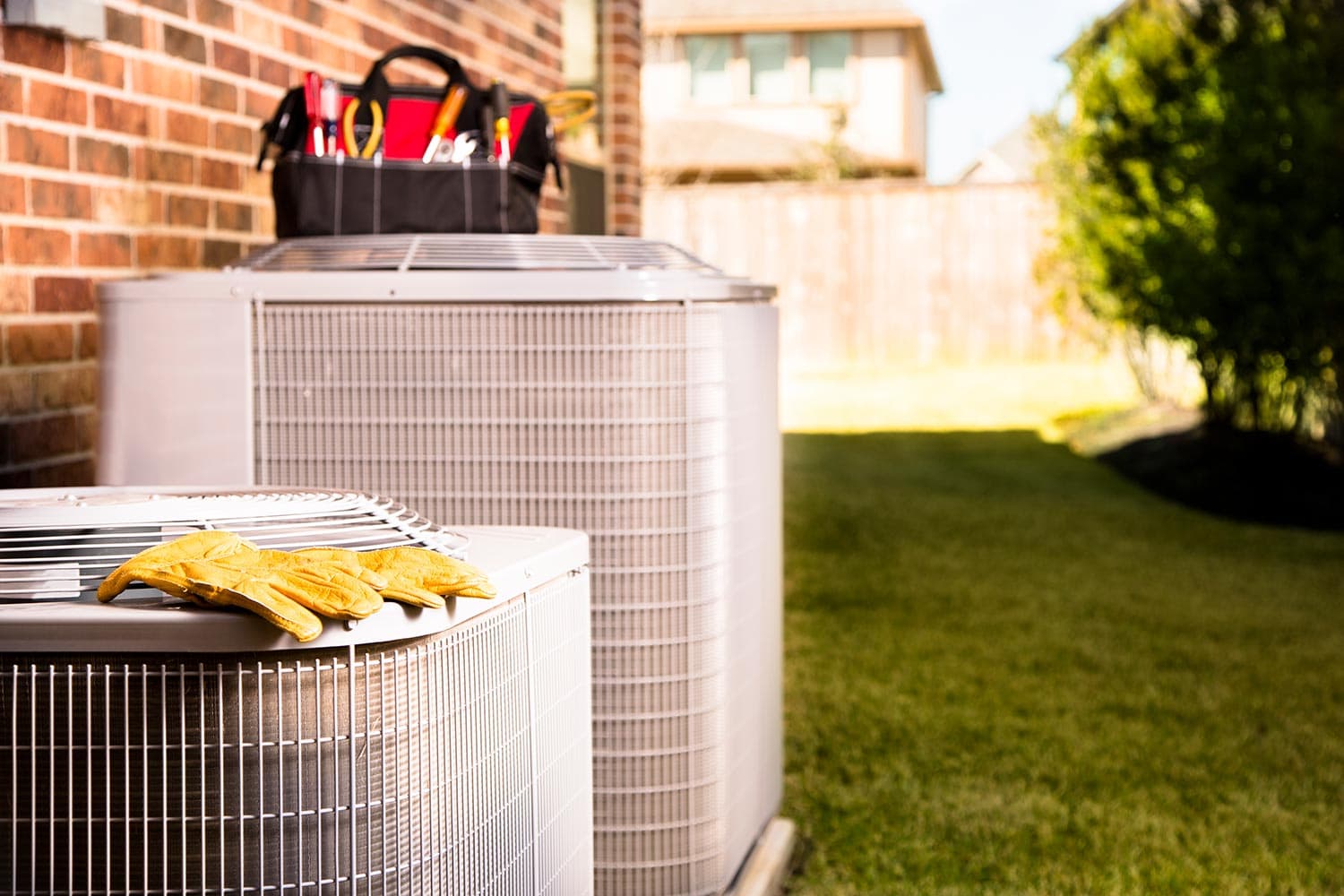If you're in the market for a central air conditioning unit, you'll run into a few size options. It might seem like a good idea to purchase an AC that's as big as it gets. Some will need a large AC to ensure their room is adequately cooled. For others, it might not make sense. If you're wondering how big a central air conditioner can get, let's take a look.
There are several sizes, ranging from 1-5 tons. The bigger the unit is, the more capable it is of removing heat from the area. While the size of the area factors in how well the air conditioner can lower the temperature, the climate is equally important. Still, this doesn't mean you should choose a unit that's a size too big.
As you can see, you have the option to purchase a central air conditioning unit up to five tons! However, are you wondering if that's the best decision to make? What size will be appropriate for your situation? What happens if you purchase a unit that's undersized or oversized? If you'd like to know this and more, keep reading ahead.

The Sizes of Central Air Conditioner Units
Let's start with a general guideline of the size ranges you might come across. Here's a list of AC sizes matched according to the area where they'll perform the best:
- 600-1,000 square feet - 1.5 tons
- 1,000-1,500 square feet - 2 tons
- 1,500-2,000 square feet - 3 tons
- 2,000-2,500 square feet - 4 tons
- 2,500-3,300 square feet - 5 tons
As you can see from the guideline above, the more area you want to cool, the bigger the size of an air conditioner you'll need. Still, there's an emphasis on the word guideline. When you get a professional to check what size you need for your home, you might get a size bigger or smaller.

Certain factors will determine how much of a size upgrade you'll need. In general, the size will increase with a 0.5-ton increment. For example, if you need an AC to cover a 2,000 square foot home, a professional might recommend a 3-ton or a 3.5-ton unit.
How Big of a Central Air Conditioning Unit Do I Need?

From the guideline above, you can get an idea of what size central air conditioning unit fits best for your situation. Still, you might be wondering if you can spend a little more to purchase an AC unit a size up. After all, some might think that the bigger the air conditioner, the quicker it can cool a room.
That may be true. But, it comes with its faults. Let's go over some of the troubles getting an oversized AC can produce.
Problems With an Oversized Central AC
Short Cycling
The first problem you will run into is short cycling. Meaning, you'll witness the AC turn on, quickly cool the room, and turn off. In theory, this sounds like it would be ideal. But, it's not because it puts a massive strain on the components of the AC.
Humidity and Hot Spots
The result of an AC that lowers the temperature quickly is that it won't get enough time to remove humidity from the air. So, you'll still feel sticky and uncomfortable even if the temperature is lower. Additionally, the air conditioner won't get enough time to distribute the air evenly. As a result, it creates hot spots.
You'll notice a temperature difference in different areas of your home.
Problems With an Undersized Air Conditioner
The problems you'll run into with an undersized central air conditioning unit aren't as big as an oversized unit. Still, you won't experience too much comfort if the air conditioner is too small for the square footage it will have to cover. An undersized AC will run for too long to get the temperature down to settings you've set on the thermostat.
It's a noticeable problem when it runs for what seems like the entire day, but it doesn't feel like it's making a change.
How To Choose The Correct Size
While the guideline above might be helpful, it only serves a purpose up to a point. The measurement that you will want to focus on for adequate cooling is BTU. BTU measures how much heat the system removes in an hour. The higher the rating, the more capable the unit is of removing heat.
However, as we've already mentioned before, bigger doesn't always mean better. The air conditioner also needs time to remove humidity. As some suggest, the sweet spot for a central AC cycle is around 15-20 minutes. This timeframe is enough for the system to lower the temperature and humidity for the most comfort.
But, what effects the BTU rating you will need? Lots of other factors will determine what size will work the best for your situation. Here's a list of things to consider before choosing a size:
- Quality of insulation
- Geographic climate and average temperatures
- Number of windows and doors in your home (along with the quality of insulation in that area)
- Amount of sun exposure
- Quality of ductwork
As you can see, there's a reason there are no answers set in stone. The guidelines should be compared with the environment you live in to determine the best size for your situation. The square footage will give you a rough idea of how much BTU you will need. Here's another guideline, this time matching square footage with BTU rating:
- 550-700 square feet - 14,000 BTU
- 700-1,000 square feet - 18,000 BTU
- 1,000-1,200 square feet - 21,000 BTU
- 1,200-1,400 square feet - 23,000 BTU
- 1,400-1,500 square feet - 24,000 BTU
- 1,500-2,000 square feet - 30,000 BTU
Adjustments
ENERGY STAR also recommends to provides a general outline of how much more or fewer BTUs you will need. For rooms with lots of sunlight exposure, increase the rating by ten percent. On the other hand, areas with lots of shade can reduce the rating by ten percent. The amount of people also matters as they recommend adding 600 BTUs per person.
What Is the Difference Between a 2 Ton and 3 Ton Air Conditioner?
Apart from size, the difference lies in their BTU rating. As some suggest, one ton equals 12,000 BTUs. With this information, we can gather that a 2-ton air conditioner offers a rating of 24,000 BTU. On the other hand, a 3-ton AC will have a BTU rating of 36,000.
So, the 2-ton unit will work best for homes with an area between 1,200-1,500 square feet. And, the 3-ton air conditioner works better for homes with an area of 1,500-1,800 square feet. You will need a higher BTU rating depending on the geographical climate and energy efficiency of your home.
How Many Square Feet Will a 2.5 Ton AC Unit Cool?
The number of square feet a 2.5-ton ac unit covers depends on where you live. As some sources suggest, a 2.5-ton air conditioner will cover 1,200-1,500 square feet in the south of the US. As we move north, it will be able to cool anywhere around 1,250-1,650 square feet.
How Long Do Central AC Units Last?

Central air conditioning units should last you about 10-15 years before you need a replacement. It is capable of lasting longer. But, that depends on how attentive you are to maintain the system.
Several factors like the size, installation, and exposure to the elements can reduce the lifespan of your system. You'll know it's time to replace it when you notice the following:
- Increasing energy bills
- Uneven temperatures (hot spots)
- The system begins to make noises.
- The room is still humid even after the AC goes through its cycle.
- Unable to keep the temperature consistent.
Can You Install a Central Air Unit Yourself?
If you're trying to cut down on costs, installing the central air unit yourself is an idea that could be interesting. Is it possible for the average person to do this task? It might please you to know that it's possible to install a central AC unit by yourself!
Still, it comes with a few drawbacks. Installing a central air conditioning unit requires a lot of permits and certifications. You'll need a permit to be allowed to install the system in the first place. This situation means you'll have to prepare for exams and pay the fee for them. And, this is without mentioning the hard labor you'll have to do!
Additionally, if you're unfamiliar with HVAC work, the installation might take longer than necessary. Along with the permits, you also need a certification to add or remove refrigerants from the system. If you hire a professional to do the work, you won't have to jump hurdles to complete the job. So, it all depends on how dedicated and how much work you're willing to do.
Final Takeaway
To get the most comfort in your home, sometimes it requires a lot of research to make the best decision. When it comes to choosing a central air conditioner size, there's a lot of factors to consider. In that case, doing the research yourself and getting an opinion from a professional can give you an idea of what could work for you. We hope you found the information above helpful!
Before you go, do you have other air conditioning concerns? Do you need more information on how long a central AC should run at a time? You can find out more by checking out our post here.
Are you considering alternatives? We can give you some ideas! Check out our post here to see six types of air conditioners. Until next time!
